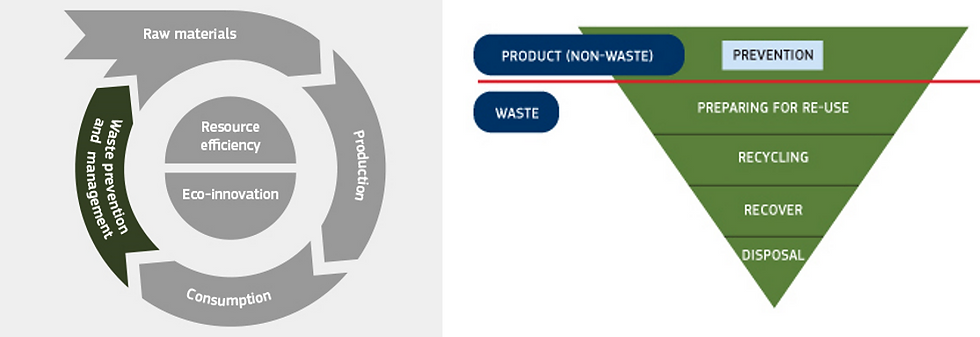Circular economy concept aims to offers solutions for a sustainable growth, good health and decent jobs by saving the environment and its natural resources. Amongst the 17 SDGs (Sustainable Development Goals), settled up on 2015 by the United Nations, some specific targets are identified to be achieved by 2030 through precise indicators. We expect to change from a linear economy (take > make > dispose) to a circular economy (renew > remake > share) in order to be more responsible on consumption and production.
"Today, only 12% of secondary material and resources is recovered for re-use" (Frans Timmermans, Executive Vice-President for the EU Green Deal). EU commission has launched concrete actions to exploit the high potential for circularity on several domains (electronics, ICT, batteries, packaging, plastics, textiles, building, food, …).
The healthcare sector is involved as well in this transformation, but, up to now, the transition to a circular economy has been relatively limited. This transition should be identified as a great opportunity to yield substantial health benefits by improving the healthcare system and reducing negative environmental impacts.
The EU healthcare sector (almost 13000 hospitals and 3 million beds) is one of the major purchasers of goods and services and consumers of water, energy, devices, building and other waste and polluting -generators. It generates millions of tonnes of waste worldwide each year. Approximately 85% of waste produced by the healthcare sector is non-hazardous (i.e., paper, plastic, glass, textile) and can be easily recycled. The remaining 15% is hazardous waste with potential risk for toxicity, infection and radioactivity. Covid-19 outbreak increased waste management, especially in the use of personal protection equipment’s.
Sustainable supply chains in the healthcare sector need to:
push for reusable products by eliminating unnecessary single-use products,
promote the use of non-toxic and non-harmful reusable and recyclable chemicals / materials in the products (green chemistry approach),
extend the usability of products through sharing, leasing, reusing, repairing, and refurbishing,
limit the use of disposal facilities at last resort,
re-think the waste hierarchy and improve the waste collection and segregation,
stimulate markets for climate-neutral and socially responsible solutions and products,
empower consumers and citizens to make sustainable choices through studies on consumption behaviours, pilot projects and training activities,
involve policy makers to enable such transformation from the beginning of a product design.
This will allow to save natural resources and reduce waste to a minimum, which it translates in a better solution panel for the patients, the planet and the overall economy.


REFERENCES and SOURCES
https://ec.europa.eu/commission/presscorner/detail/en/ip_20_420)
https://ec.europa.eu/info/sites/default/files/european-green-deal-communication_en.pdf
https://www.greenhospitals.net/wp-content/uploads/2015/08/Waste-GGHH-Guidance-Document-Sample.pdf
https://ec.europa.eu/environment/green-growth/waste-prevention-and-management/
https://ec.europa.eu/commission/presscorner/detail/en/ip_20_420
https://noharm-europe.org/issues/europe/circular-healthcare-resources

Comments